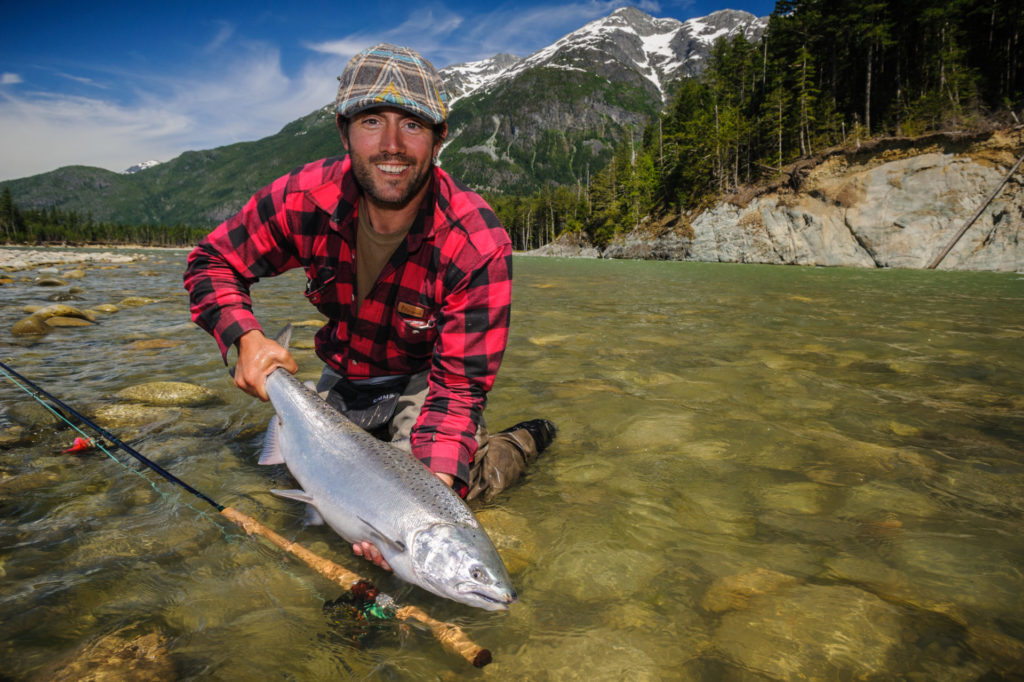The start of the 2019 fishing season saw the public fishery take a series of reductions in opportunity in order to protect interior Fraser River chinook salmon (Oncorhynchus tshawytscha) stocks of concern, as well as southern resident killer whales (Orcinus orca). While recreational anglers have no issues doing their part when it comes to conservation and sustainability, they do expect that public fisheries are managed based on science, not politics. Of course, that’s not what happened when Fisheries Minister Jonathan Wilkinson announced non-retention of chinook in many of the public fisheries for the south coast of British Columbia. It would appear that his decision was based on immense political pressure exerted by ENGOs (environmental non-government organizations) who were calling for a complete closure of all salmon fisheries that could potentially encounter chinook salmon. Couple this with First Nations vocally opposing the public fishery in areas where stocks of concern were not even encountered, it’s no wonder the public fishery was thrown under the bus.
Advertisement

While participating in a technical subcommittee of the Sportfishing Advisory Board (SFAB) chinook/coho working group, I learned that the greatest impact or exploitation rate on chinook stocks of concern were and are the First Nations fisheries in the Fraser River. While these First Nations fisheries are intended for food, social and ceremonial purposes, we are all too aware that many of these fish are making their way into illegal black-market sales. During the minister‘s announcement, he pledged to put additional resources in place in regards to enforcement, to not only protect the stocks of concern, but also to curtail illegal activities. That being said, there was regular incidences of food, social and ceremonial gillnets being set in the Fraser outside of announced fisheries.
Participants in the public fishery worked very hard during the consultation process with the Department of Fisheries and Oceans, only to have their input disregarded by the minister by not allowing opportunity where the scientific evidence clearly showed that stocks of concern would not be impacted. A prime example of this is not allowing mark select fisheries or hatchery retention, but only allowing a strict catch-and-release fishery in many areas of the south coast. Many anglers find this decision to be unacceptable because allowing for mark select or hatchery retention fisheries provide not only opportunity for anglers to retain a fish, but that fish also provides important scientific data by which to manage fisheries in the future. Data such as run timing, growth rates, DNA and catch rates can all be gleaned through hatchery retention fisheries. The SFAB has been strongly encouraging the department to mark all chinook salmon of hatchery origin for the reasons listed above. It makes absolutely no sense, from a conservation or opportunity standpoint, to not mark 100 per cent of all hatchery origin salmon, which is done by our neighbours to the south in Washington and Oregon states.
Advertisement
The marking of all hatchery fish would certainly require some investment on behalf of the department. However, with the advent of automated technology in the form of marking trailers, managers can efficiently mark or clip hundreds of thousands of juvenile salmon in a day. By increasing hatchery output and marking 100 per cent of all fish released, the department is not only increasing the food supply for southern resident killer whales, but also increasing and maintaining opportunity for the public fishery in British Columbia.
Until next time, promote conservation and remember: pictures last longer than fillets, practice catch and release.
Advertisement